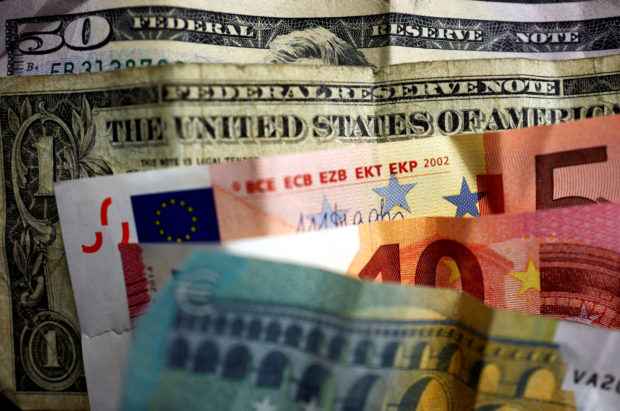
FU.S. dollar and Euro bank notes are photographed in Frankfurt, Germany, in this illustration picture. REUTERS/Kai Pfaffenbach/File photo
LONDON/SINGAPORE – The euro fell against a strengthening dollar on Thursday, after having posted its largest one-day gain in a month, ahead of euro zone inflation data that could renew the rally in the currency.
The euro rose 0.9 percent on the dollar on Wednesday, marking its biggest daily jump in a month, following hotter-than-expected German inflation in February that added to pressure on the European Central Bank to raise rates after unexpectedly strong readings in France and Spain. It was 0.35 percent lower at $1.0633 ahead of inflation data due at 1000 GMT.
But investors are taking the view that the euro is poised to rise as markets are bracing for another high reading.
“Contrary to expectations the data for the euro zone due today might not show a small fall but instead also record a further rise. The same applies for core inflation,” said Antje Praefcke, a foreign exchange analyst at Commerzbank.
“As a result the ECB rate expectations might be adjusted to the upside again.” That would likely send the euro higher, she added.
Sterling was held back by remarks from Bank of England Governor Andrew Bailey, who said “nothing is decided” on future rate increases which had traders trimming back bets on higher rates. Sterling was down 0.5 percent to $1.1964.
The dollar index, which measures the U.S. currency against six others – rose 0.39 percent to 104.79, boosted by a rise in U.S. Treasury yields and after Federal Reserve official Neel Kashkari left the door open to a 50-basis point rate hike at the Fed’s next meeting in March.
Elsewhere the yen fell 0.37 percent to 136.72 to the dollar, while the Australian and New Zealand dollars and the Chinese yuan wavered slightly after strong gains on Wednesday that were supported by roaring Chinese manufacturing data.
The Aussie dollar was last 0.44 percent softer at $0.6729. The New Zealand dollar, which rose 1.2 percent on Wednesday, fell 0.7 percent on Thursday to $0.6214.
China’s yuan settled back to 6.9125 to the dollar after logging its biggest jump of 2023 on Wednesday.
Investors are looking ahead to China’s National People’s Congress meeting, which begins on Sunday, watching for guidance on policy support for the post-COVID recovery.
“Yesterday’s positive surprise in the PMIs for China in February are a positive for mining commodity prices and the currencies of countries that export them,” said Commonwealth Bank of Australia’s head of international economics, Joe Capurso.
“The yuan and commodity currencies such as the Australian and New Zealand dollars can rise materially if the meeting sends a pro‑growth signal, as we expect,” he said.
Bitcoin slipped 1 percent to $23,395 as trouble at crypto lender Silvergate weighed on the mood.
Besides European inflation, euro zone employment and central bank minutes are due later in the day, as are U.S. jobless claims data.